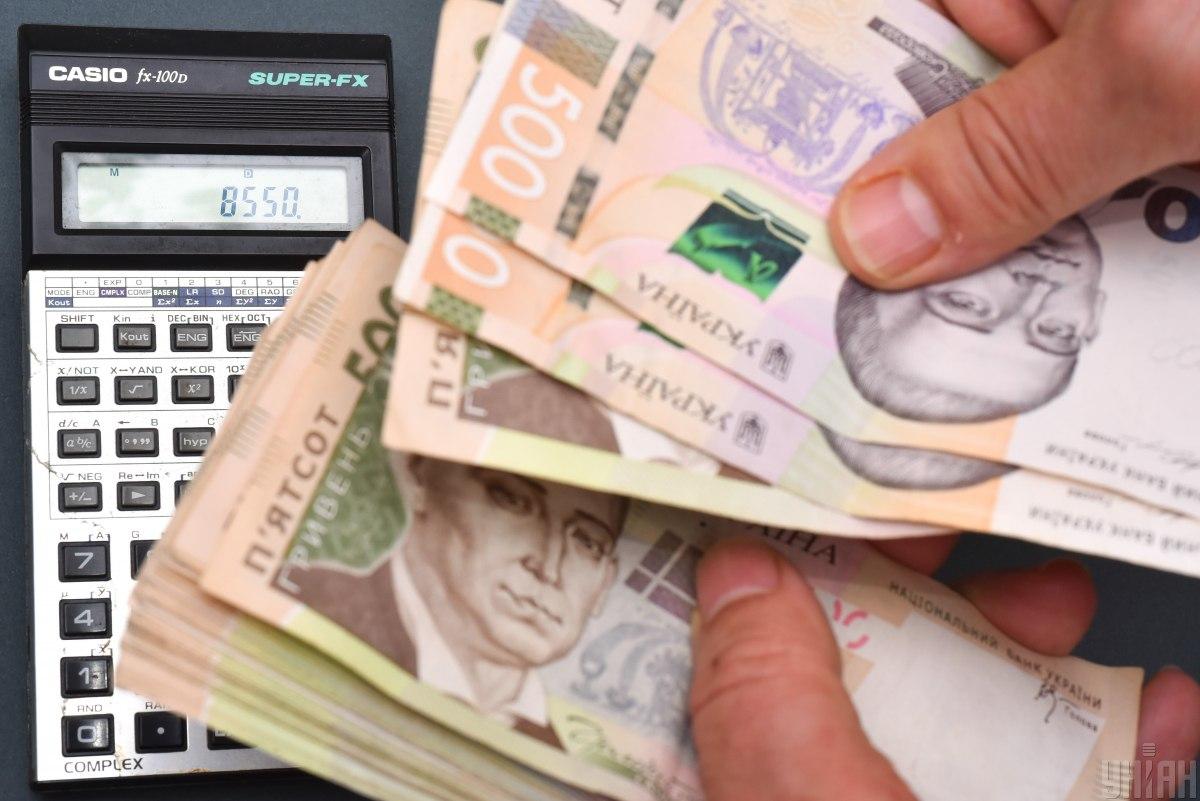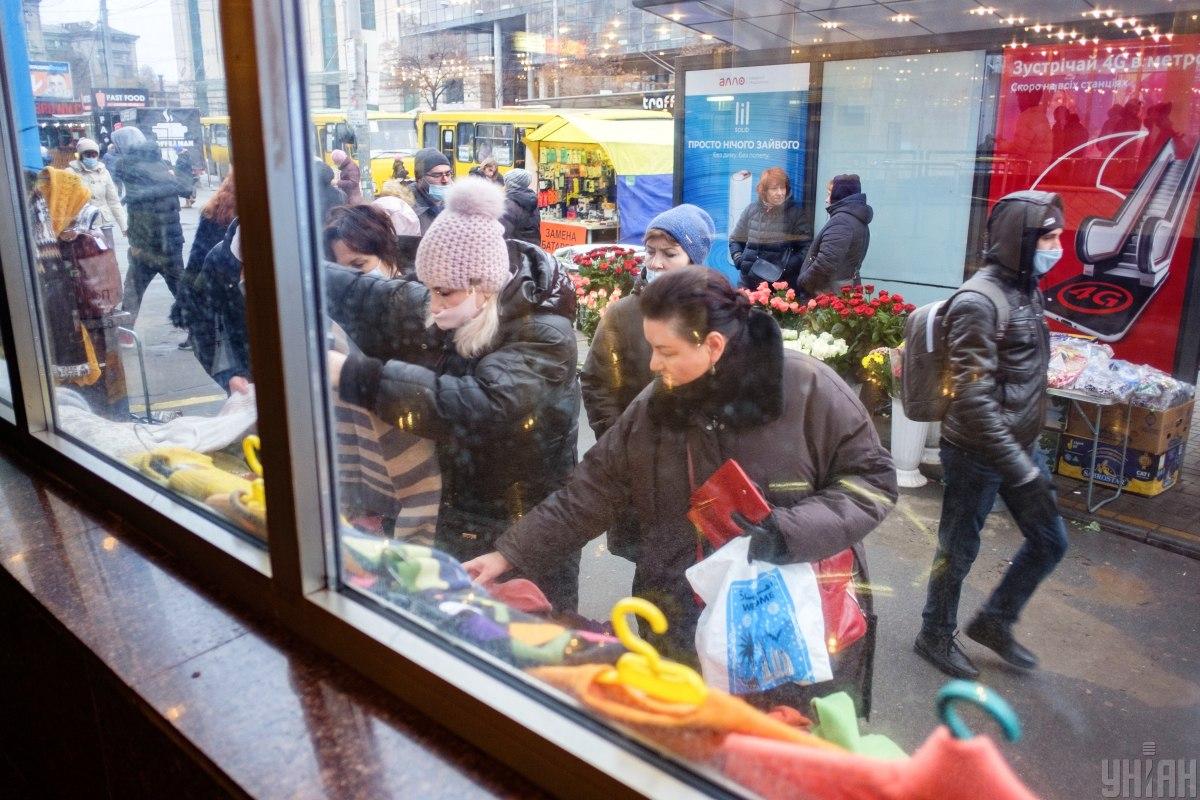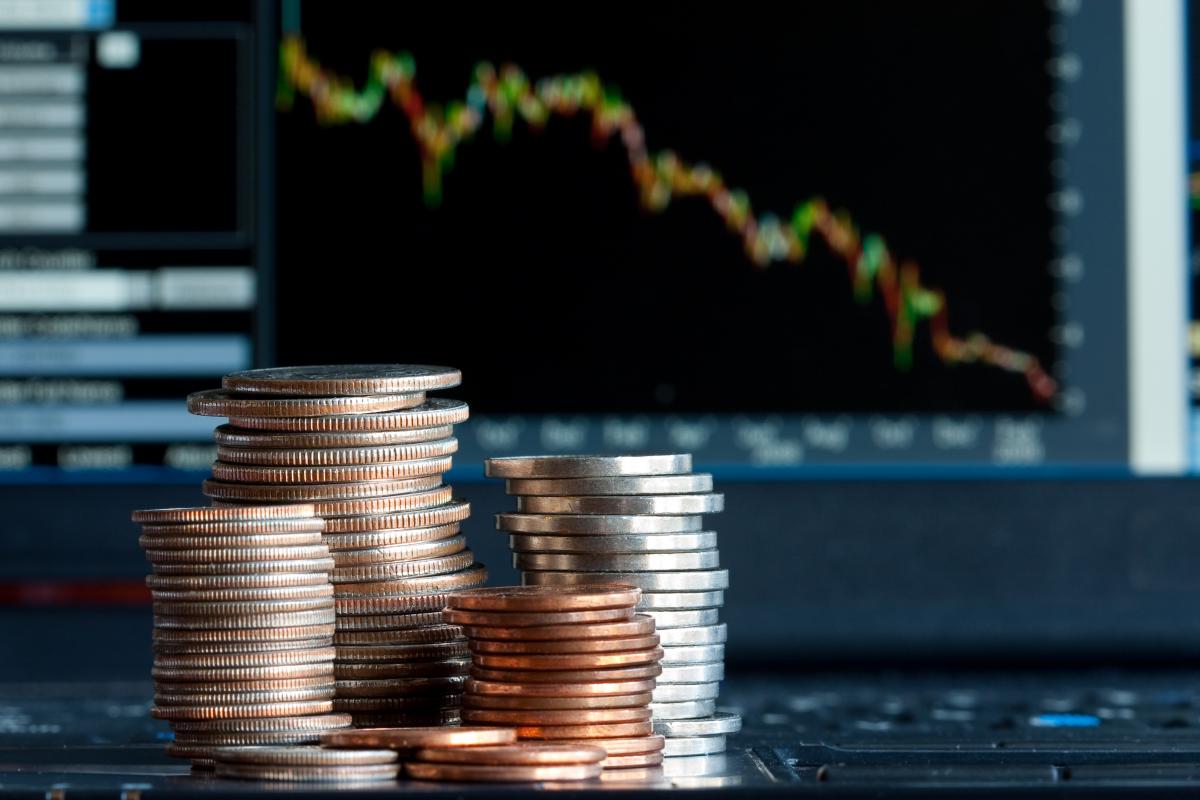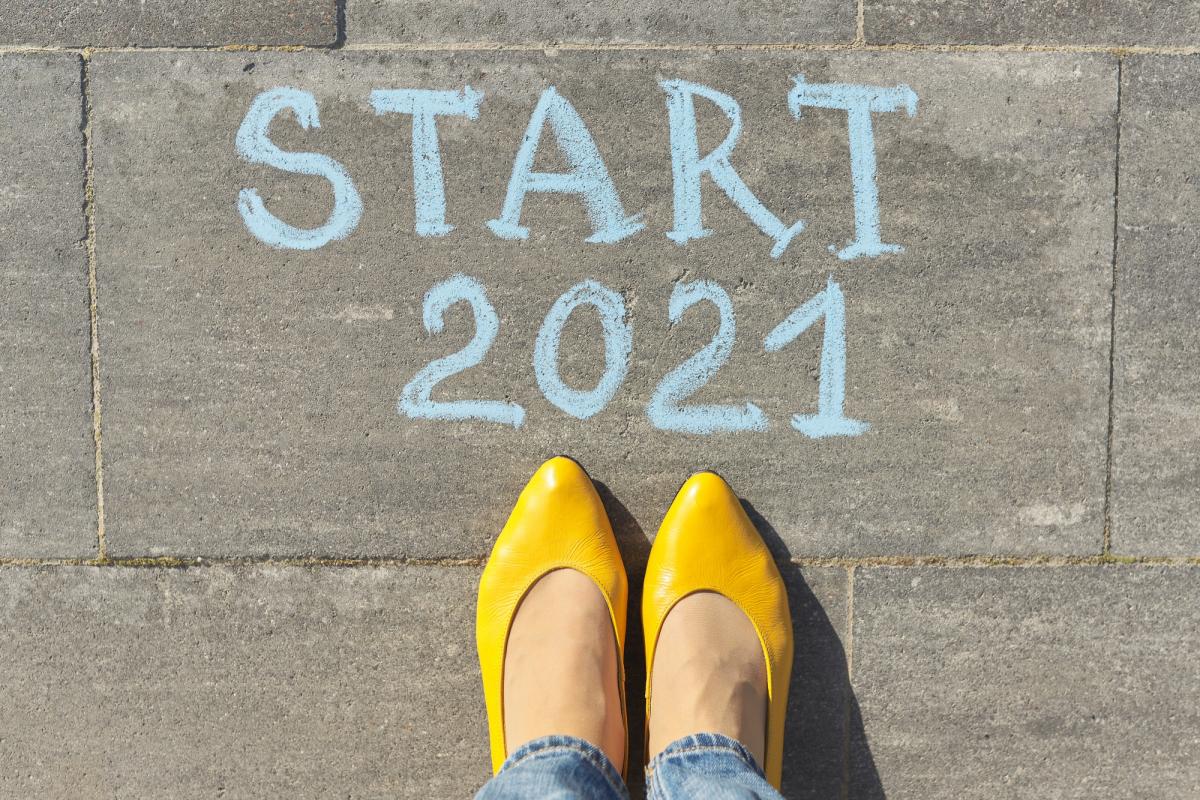
Year's balance: Ukraine's economy weathers a corona blow, looking to the future with hope
Ukraine, like the rest of the world this year, faced an unprecedented challenge – the coronavirus pandemic, which provoked a deep economic crisis. Despite insufficient government assistance, the national economy has adapted and prevailed, having gained important wins in a number of areas.
The year 2020 is coming to an end, having put all mankind in a state of shock. The pandemic became a "black swan" that hit global economy with its heavy wing, still threatening to turn into a lingering crisis.
At the start of the year, many experts were optimistic of continued growth in the global and most national economies. That was before most prosperous European economies with strong health care systems were forced to go on lockdown.
Other countries followed suit, including the world's largest economies – the U.S., China, Japan, and UK.
The rapid hike in the spread rate and deaths, along with the feverish measures by governments to support their fellow citizens and national economies have put an end to hopes that countries will be able to go through the dramatic period with minimal losses.
Over the course of the year, the authorities in most countries went for last-resort measures, introducing long-term strict quarantine restrictions in order to at least somehow curb the spread of the novel disease.
For a while, these measures proved efficient to cope with the first wave of the pandemic, but in the fall the second one struck, so governments had to revisit their lockdown practices.
Mass vaccination, launched by year-end in a number of developed countries, gives hope for victory in the difficult fight against COVID-19. However, it's impossible to vaccinate most of the world's population in a short period of time. As for Ukraine, tentative forecasts suggest the vaccine will come in as late as the spring or summer of 2021.
In this regard, it would be plausible to suggest, as many experts do, that the return to the old lifestyle would be delayed until next fall – and that's an optimistic outlook.

Quarantine restrictions delivered a particularly hard blow to the sectors of global economy that are directly related to the services and engagement. These are passenger transportation, tourism, hotels, catering, entertainment, and retail. According to experts, the global gross domestic product by the end of 2020 will fall by more than 4%.
To support the affected businesses and the population, many governments have introduced various preferences and incentives, as well as offered direct payments from the budget to maintain effective demand and mitigate the effect of the plunge. Of course, such generosity will cost in the future, but the authorities in many countries are now much more afraid of a repeat of the Great Depression of the 1930s, which many economists fear.
Lockdown and its effect on economy
Ukraine, along with other countries, went for a two-month lockdown this March. After that, the country switched to the so-called adaptive quarantine – depending on the level of morbidity and hospital load in each region, different restrictive measures were established locally.
At the end of the year, the Cabinet of Ministers tightened quarantine on weekends before ultimately abandoning the idea, and on the eve of the New Year, quarantine measures characteristic of the "orange" threat zone, have been put in effect throughout the country.

The peculiarity of the national lockdown was that it was introduced when only a few cases of coronavirus were recorded in the country. Thus, the authorities decided to postpone the testing of the health care system's resilience.
More or less, the government has managed to enhance the level of hospital and healthcare workers' readiness for combatting the pandemic. That is why, even when over 15,000 new daily cases were being recorded in the fourth quarter, this didn't bring life in the country to a full halt.
However, stating that saving lives is top priority, the government has actually sacrificed national economy, which had been experiencing serious problems even beyond the coronacrisis issues.
After a slowdown in GDP growth to 1.5% in the fourth quarter of 2019, a 0.2 percent drop was recorded in January-February 2020.
The new problems that the unstable economy faced led to the fall of President Volodymyr Zelensky's first government. Young market romantics from the Cabinet led by Oleksiy Honcharuk gave way to "executives" with Denys Shmyhal at the helm.
Realizing that no growth could be expected in 2020, the government prepared sequestration of the state budget, which in April found support from Parliament. As a result, the budget deficit tripled to 7.5% of GDP, or UAH 300 billion.

Also, the MPs set up a coronavirus response fund in the state budget, which amounted to almost UAH 65 billion. Surprisingly, most of the money went to road repairs as part of the presidential Big Construction Project.
Certain chaos in the moves pursued by authorities has become a characteristic feature of Ukraine's fight against coronacrisis. There was often an impression that the officials simply didn't know what to do. At the same time, for medium and small businesses, government aid was offered in the form of a preferential lending program "5-7-9", as well as assistance for partial unemployment. That is, Ukraine applied the same support programs as in developed economies, but with much more modest cash injections.
With regard to assistance to the industries most affected by coronacrisis, Ukraine was no black sheep.
It should be noted that the pandemic and the need for social distancing have given a powerful impetus to the development of a number of industries and spheres.
First of all, it's e-commerce, delivery services, and modern technologies with a minimum human engagement. Besides, against the backdrop of increasing demand for food, Ukrainian agricultural business started to discover new markets and strengthened presence in traditional ones.
Ukrainian rollercoaster
The country's economic life proceeded along a sinusoidal pattern: in the second quarter, Ukraine's GDP fell by 11.4%, but then the situation stabilized and even began to improve.
One of the indicators was industrial output, which dropped 16% in April over the days of the most severe quarantine, but then managed to reach a 5% decline trajectory for the 10 months.
According to the State Statistics Service, in the third quarter, the GDP fall stood at 3.5% on year. At the same time, compared to the previous disastrous quarter, real GDP, taking into account the seasonal factor, increased by 8.5%, which means that the Ukrainian economy is actually on a path toward recovery.
By the end of 2020, the government expects the national economy to fall by 5%.
"Today we clearly understand that this year we will lose no more than 5% of GDP over this crisis," Prime Minister Shmyhal said confidently in December.
Inflation in 2020 hit record lows of around 2% at the height of the crisis due to a sharp decline in consumer demand and business activity amid quarantine restrictions. At the same time, in November inflation accelerated to 3.8% in annual terms and, apparently, will keep rising.
Relations with IMF
In the conditions of the ongoing economic crisis, Ukraine never refused to fulfill its obligations to creditors and regularly paid on its debts.
This policy of avoiding default allowed the National Bank to prevent panic on the foreign exchange market and moderately weaken the hryvnia. While in January the exchange rate was at UAH 24 per dollar, by the end of the year it exceeded UAH 28. Four hryvnias up over the 12 months of the global economic storm testifies to the strength of the national currency, it must be admitted.

In the summer of 2020, Ukrainian authorities managed to enlist the support of the country's key creditor, the International Monetary Fund. In June, the Fund approved a Stand-By Arrangement for Ukraine for a period of 18 months, in the amount of $5 billion. In the first tranche, Ukraine immediately received $2.1 billion.
According to plan, by the end of the year the IMF was set to transfer two more tranches of $700 million each. In addition, in July, Ukraine agreed with the European Union to receive macro-financial assistance in the amount of EUR 1.2 billion.
As is often the case, the authorities were in no hurry to comply with creditors' demands, although the president and prime minister regularly spoke of the ongoing implementation of structural beacons set by the IMF.
In early December, while the existing agreements with the IMF and the EU were in place, no tranches were received whatsoever. And this came amid serious problems facing the national budget. In November, the State Treasury was forced to disburse payments for secured expenditures only.
The situation was critical because within a short time it was necessary to find about UEH 100 billion. But in December, the European Commission finally allocated the first tranche of EUR 600 million, and the Ministry of Finance in December raised more than UAH 110 billion for the government domestic loan bonds.
Moreover, at the end of the year, the IMF review mission finally began its work, so the Cabinet expects to receive the second tranche under the SBA as early as the first quarter of 2021.
Small wins
The ongoing crisis became an important stimulus for change in Ukraine. In some areas, the sprouts of the new were rising faster, being revolutionary in nature.
Social distancing rules have accelerated the transition of the government and many businesses online.
This year, the Diia portal of public services was launched, and the corresponding mobile application has already been installed by more than 6 million citizens. Already today, Ukrainians can in a matter of minutes be registered as an entrepreneur or open a limited liability company, as well as receive about 50 public services in digital format, including receiving a driver's license, a birth certificate for a newborn, and using digital IDs for internal travel.

Curator of this area, Deputy Prime Minister Mykhailo Fedorov, says in 2021, the Ministry of Digital Transformation seeks to transfer all public services to digital format and completely shift away from paperwork.
Strategically important for Ukraine, which is one of the world's largest producers of agricultural products, was the adoption this spring of a truly historic law on the launch of the farmland market, which will take place from July 1, 2021. And although this was a rather curtailed version of the reform, liberalization of the industry as such could bring significant changes and new opportunities for development.
According to Prime Minister Denys Shmyhal, the law should increase fivefold the cost of a hectare of Ukrainian land, and nearly $100 billion is expected to be invested in the industry in the next 10 years.
The outgoing year was very productive for the country's infrastructure industry. Within the framework of the "Big Construction" state program launched in March, about 4,000 kilometers of roads was repaired, which is almost five times more than in 2019, setting an absolute record in the history of independent Ukraine.
In 2021, the record may be broken, as the Cabinet seeks to allocate even more funds to road infrastructure – more than UAH 150 billion compared to UAH 120 billion in 2020. At the same time, they plan to not only build roads, but also start massively reconstructing bridges.
Significant for the country in the outgoing year were the tenders for the transfer to the concession of two major ports – Kherson and Olvia (Mykolaiv).
In the first case, the Risoil-Kherson company undertakes to invest more than UAH 300 million in its development within 30 years of using the Kherson port facilities. The port of Olvia will be used by the Qatari company QTerminals for the next 35 years. The concessionaire has undertaken to pay the state UAH 82 million annually, investing UAH 3.4 billion in the port development over the next five years.
Hopes and plans for 2021
Assessing the prospects for 2021, we must admit that the main challenges for the government will remain the same – the fight against coronavirus and work toward economic recovery.
So far, the Cabinet does not intend to abandon its macroeconomic forecast for 2021 made back in the summer, which provides for the GDP growth at 4.6%. At the same time, even the head of the Ministry of Economy, Ihor Petrashko, doesn't rule out that in the first quarter of 2021, a pandemic could lead to a 3% drop in GDP. According to him, the government plans to achieve the scheduled high growth rates through stimulus measures.
As is often the case, ministers stopped short of specifying what these measures will be. Perhaps they will be presented together with the National Economic Strategy of Ukraine until 2030, which should be finalized by April.
In 2021, the authorities want to finally start a large privatization and attract at least UAH 12 billion to the budget.

The year 2020 will be remembered for the successful sale of the Dnipro Hotel in the heart of Kyiv. At the auction, the starting price increased almost fourteen times, to UAH 1.11 billion.
The State Property Fund promises to do something similar in 2021 with state-owned thermal power plants and regional energy distribution companies, the Odesa Port Plant, and a number of other SOEs. However, to this end, the Rada must lift its own ban on selling objects of large-scale privatization pending quarantine.
The government also plans to expand the practice of leasing infrastructure facilities on a concession basis. Moreover, not only ports will be put up for concession, but also airports, railway stations, and highways.
At the same time, next year, the government again needs to solve a puzzle of finding money to pay off and service the state debt. In 2021, this requires $16 billion. It is clear that it will be very difficult to accomplish without the support of external creditors.
Ukrainians in 2021 can count on an increase in the minimum wage to UAH 6,000 from January 1, as well as on a slight indexation of pensions.
Along with this, however, bills will also grow significantly. The Cabinet of Ministers in late December canceled the preferential electricity tariffs for households, while next year, gas transmission, central heating, and water supply tariffs will rise.
At the same time, in the 2021 State Budget, the Verkhovna Rada has laid UAH 36.6 billion for utility subsidies, which is half a billion below the figure provided in 2020.
Fortunately, so far in Ukraine, the rates of personal income tax, "military duty", and a single social contribution have not changed. But taxes tied to the "minimum wage" will naturally grow – this primarily concerns taxes for individual entrepreneurs and real estate tax.
It is obvious that Ukraine is facing a rather difficult year. And the first test starts on January 8: a nationwide three-week tough quarantine will come into force. It is likely that it will be repeated more than once throughout the year, so it is better to immediately discard the illusion that life will soon return to its former course.
However, things aren't that bad. After all, the pandemic has reaffirmed the simple truth that any crisis is the best time for change. Therefore, it is advisable for Ukraine and its citizens not to lose sanity, to remain calm, if possible, stick to a healthy lifestyle, and try not to miss the window of opportunity, which in other periods is usually tightly closed. And then everything will be fine. Happy New Year!
Dmytro Shvarts



